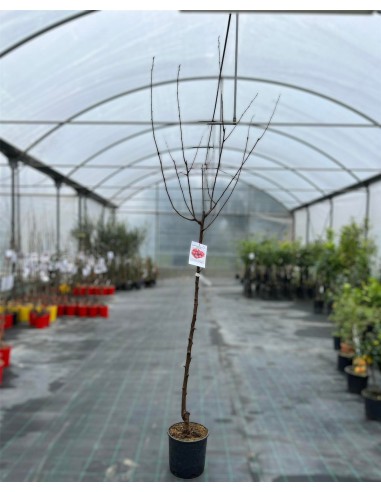copy of Stanley plum tree
Generalities:
The "Stanley" plum has American origins and spread all over the world in the early 1900s.
Cultivable in open air and in pots, it is an average vigorous tree that constantly produces many medium-sized fruits. The plum is covered with a thick dark purple skin, the pulp is green - yellowish and its flavor is slightly acidic. The Stanley plum does not need pollinating varieties as it is self-fertile. The fruits of this variety are large and ovoid in shape; the color that characterizes them is dark purple; ripen from August to September they are also excellent dried.
- jar 16cm, height 120/150cm
- jar 22cm, height 150/170cm
Generalities :
The "Stanley" plum is a medium-vigorous late-ripening plant, with a globular expanded habit, of constant and high productivity. It is self-compatible but uses pollinators. Interesting plant mainly in the List, especially in the Center-South. It has demonstrated a wide adaptability to various culture environments, thanks also to its moderate resistance to cold. Medium fruit, ellipsoidal-elongated, asymmetrical, dark blue-violet and very pruinose. The early coloring of the fruit often leads the producers to harvest too early, even before mid-August in the North, compromising the good characteristics of the fruit. The greenish-yellow pulp, very firm, medium sugar and acidulous, not very aromatic and stands out. It has good organoleptic characteristics that make it appreciated for fresh consumption, but also susceptible to industrial transformation (syrup on fresh as it is or after drying).
Cultivation and Care :
The plum tree prefers exposure to full sun and a warm temperate climate. It prefers moist and deep soils of medium texture, even clayey, provided they are well drained. Regular irrigation during the flowering, fruit setting and fruiting period. Spring rich nitrogen fertilizers and phosphorus and potassium based solutions at the time of production. Manure or manure during vegetative rest.


